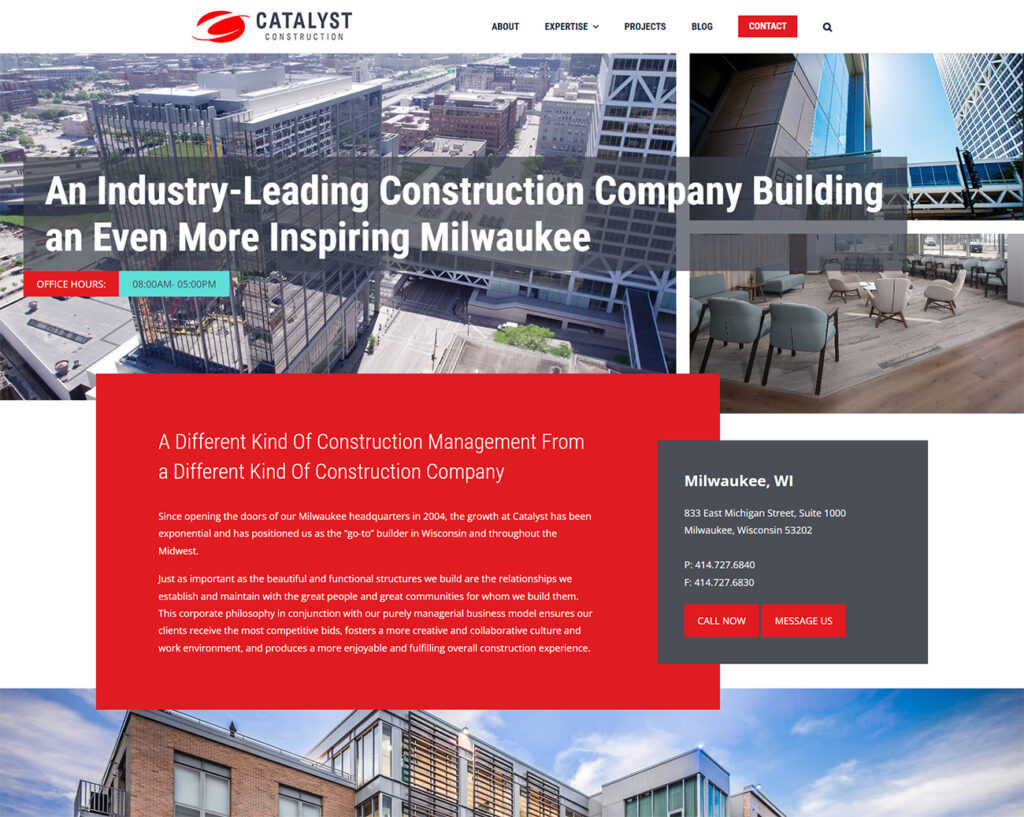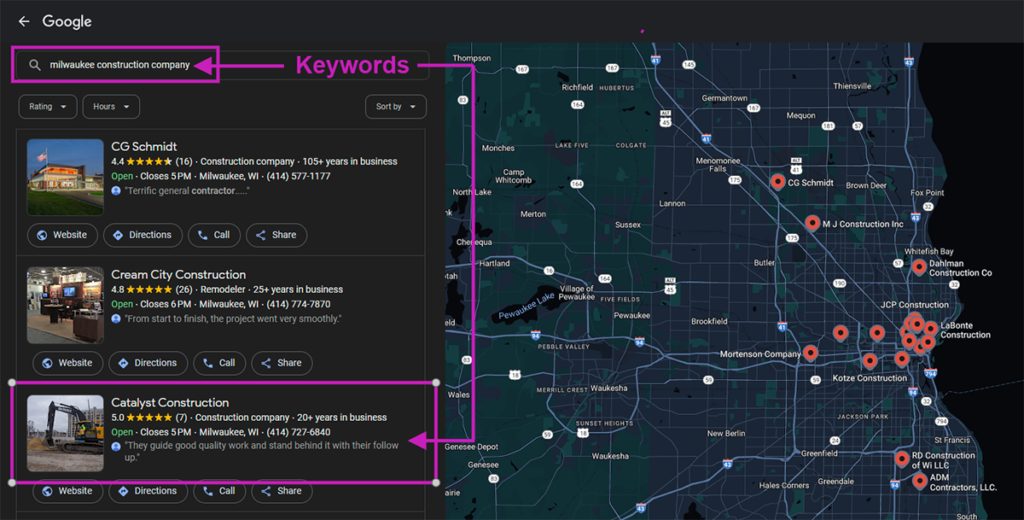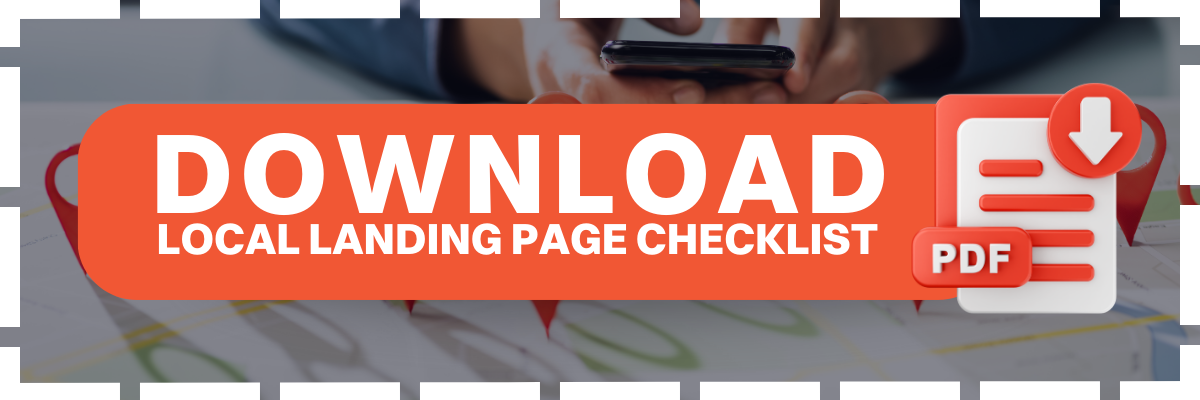Location Landing Pages: Why They’re Essential to Your Local SEO Strategy in 2025

Whenever I’m on a long road trip, there’s one thing I’m always hunting for—coffee. Not just any coffee, either. I’m talking about those hidden gems—the locally owned spots in small towns or trending neighborhoods.
I’ll pull into a new city, fire up Google Maps, and search “best coffee near me.” This little map has become my compass. I don’t scroll far—I check the top listings, glance at reviews, and head to the most promising place.
If your business isn’t showing up in those top results, you’re missing out—on people like me and many other locals and travelers ready to stop by.
This is the power of Local SEO.
More and more, searchers aren’t just looking for products or services — they’re looking for the closest, best-reviewed, or most convenient option in their area. Businesses that understand how to show up in those micro-moments win attention (and conversions).
Location landing pages make that possible. When done right, they align your digital presence with real-world intent — helping you rank, connect, and convert in the places and moments that matter most.
What Are Location Landing Pages?
Location landing pages are dedicated web pages designed for individual business locations or service areas. Think of them as digital storefronts — each one tailored to represent a specific city, neighborhood, or region where your business operates.
Unlike generic “Contact Us” pages or auto-generated directories, these pages are built to serve the unique needs of local customers and search engines alike.
They typically include:
- Accurate business information (Name, Address, Phone Number)
- Localized content and keywords
- Service offerings specific to that location
- Testimonials or reviews from local customers
- Driving directions, parking info, and contact options
And just to be clear — these are not your Google Business Profiles or cookie-cutter landing pages with only the city name swapped out. Effective location pages are rich, relevant, and customized for their communities.

Catalyst Construction in Milwaukee
Why Location Landing Pages Are Critical for Local SEO
Local landing pages aren’t just a “nice to have” — they’re one of the most effective ways to connect your business with customers searching nearby. From improving visibility to driving conversions, these pages play a crucial role in your broader SEO strategy. Here’s why they matter:
Enhance Local Search Visibility
Search engines prioritize proximity, relevance, and prominence when delivering local results. Well-optimized location pages check all three boxes — helping your business appear in local packs, map results, and organic listings. They also allow you to rank for geo-specific keywords like “milwaukee construction company” or “appliance repair services near brookfield”.

Capture High-Intent Local Traffic
When someone searches with a city name or “near me,” they’re usually ready to act. Location pages meet that intent head-on, providing the details, context, and reassurance needed to move them from search to conversion. Think of them as digital welcome mats — inviting, helpful, and built for action.
Take Control of Your Local Brand Experience
When your business serves multiple cities or regions, a single, centralized website often falls short. It can’t speak to the unique character, needs, or expectations of each community you operate in.
That’s where location landing pages come in. They allow you to tailor your brand presence to each market — whether showcasing your local team, promoting region-specific services, or aligning messaging with local events and culture.
Instead of presenting a one-size-fits-all experience, create a personalized one that feels familiar, relevant, and trustworthy to the community you serve.
Build Local Authority & Search Trust
Search engines — and people — trust businesses that show up consistently and credibly in the places they serve. Location landing pages help you do just that by anchoring your site with relevant, geo-specific content that proves you’re not just another generic brand — you’re part of the local community.
That trust starts with the basics: consistent NAP (Name, Address, Phone Number) data across your site and directories, local backlinks, and optimized on-page elements. But it doesn’t end there.
What truly sets top-performing pages apart is informative, hyper-local content — the kind that reflects an understanding of the market and shows you’re established in the area. We’re talking about:
- Writing articles that speak directly to local challenges, opportunities, or trends
- Highlighting city-specific services or case studies with measurable results
- Showcasing local projects, team members, and partnerships
- Embedding customer reviews from people in that community
- Using regional language or references that resonate with locals
These elements tell both users and search engines that your brand is relevant, reliable, and rooted in the local areas you want to rank for.
When your content speaks to the community—not just at it—you’re no longer competing for rankings. You’re building real, lasting authority.

How to Build and Optimize Location Landing Pages
Creating effective location landing pages isn’t just about copying and pasting content with different city names — it’s about crafting experiences that are genuinely useful to local visitors and credible in the eyes of search engines. Below are key steps and best practices to guide your approach:
1. Start with a Strategic Rollout Plan
Not every location needs a landing page immediately, and not all pages should follow the same model. Begin by prioritizing high-opportunity markets: These might be cities with high search demand, underperforming regions, or areas where you want to expand visibility.
Depending on your business model, you’ll need to decide between physical location pages and service-area pages:
- Go with physical location pages when your business has a storefront, office, or publicly listed address in the area — like a retail shop, clinic, or coworking space. These pages should include address details, maps, parking info, and localized CTAs like “Visit Us in [City].”
- Use service-area pages if you don’t have a physical address but operate within a defined geographic zone — like a roofing company serving five counties or a consultant working regionally. These pages should highlight the area served, include testimonials or project examples from nearby clients, and use CTAs like “Book a Consultation in [City].”
Whichever route you take, aim for quality over quantity. A handful of well-crafted, locally relevant pages will perform better than dozens of near-duplicates.
2. Make Key Business Info Clear and Crawlable
Search engines — and your users — rely on clear, well-structured information to navigate your site. That means essential business details should be easy to find, read, and index.
To support both usability and SEO:
- Use HTML text for critical details (don’t hide them in images or embedded maps).
- Include helpful context like hours of operation, parking details, and clickable contact links.
- Keep formatting clean and consistent across all location pages.
When your information is crawlable and easy to access, it builds a smoother user experience and makes it easier for Google to understand and rank your pages accurately.
3. Write Unique, Localized Content That Adds Value
Avoid the trap of duplicating content and simply swapping out city names. Each location should feel distinct and tailored to the people it serves. Consider including:
- Neighborhood-specific services or community references.
- Customer testimonials or case studies from the area.
- Staff bios, local events, or team photos.
- Content written with help from local team members who know the market.
The goal is to make visitors feel like they’ve landed on a page built just for their city — not a templated clone.
4. Apply Local SEO Best Practices On-Page
Optimization goes beyond keywords. Make every element of the page reinforce your local relevance by following SEO best practices, including:
- Geo-modified keywords in your H1, meta title, and throughout body content.
- Clean, descriptive URLs.
- Image alt text with location-specific descriptions.
- Internal linking that points to other relevant location or service pages.
These small details help search engines understand who the page is for — and where it should appear.
5. Use Structured Data and Schema Markup
Structured data plays a pivotal role in how your pages are interpreted — not just by traditional search engines but increasingly by AI-powered search and answer engines. Using schema markup provides search systems with explicit context about your business, making your pages more eligible for rich results and visibility across emerging platforms.
For each location page, implement:
- LocalBusiness or Service schema
- Structured data for hours, services, geo-coordinates, and customer reviews
- Unique identifiers like business names and URLs to avoid ambiguity across multiple listings
This added layer of clarity helps ensure your content is not only crawlable but also understandable and surfaceable in AI-powered features like Google’s SGE and voice search results.
In a world where search is increasingly conversational and contextual, structured data helps your business show up — accurately, confidently, and ahead of the competition.
6. Prioritize UX, Mobile Performance, and Conversion
Most local searches happen on a smartphone — often by people in motion. That means your location pages need to:
- Load quickly and be fully mobile-responsive.
- Display click-to-call, “Get Directions,” and “Book Now” CTAs prominently.
- Have clear hierarchy and scannable content — think bold headings, bullet points, and visual cues.
- Be accessible to users with disabilities (ADA compliance).
You’re not just trying to inform — you’re helping someone take action, right then and there.
7. Maintain and Monitor Each Page Like a Mini-Site
Each location page should be treated as a living, breathing part of your site. That means:
- Regular updates to reflect new hours, staff, promotions, or seasonal content
- Monitoring page-level performance — bounce rates, conversions, click-throughs, etc.
- Iterative testing of CTAs, copy tweaks, or layout adjustments based on user behavior.
What works in one city might not work in another, so don’t set and forget. Use insights to keep pages fresh, relevant, and effective.
Bonus Tip: Connect Location Pages to Your Google Business Profile Listing
Optimizing your Google Business Profile (GBP) is essential to appearing in the coveted Local Pack—the top three map results for local intent searches.
To strengthen the connection between your location landing pages and your GBP listings:
- Insert the corresponding landing page URL in the Website field of each location’s Google Business Profile.
- Ensure your landing page’s content reflects the information in your GBP—business name, address, phone number, hours, etc.
- Use the same structured data (schema markup) on your landing page that matches your GBP details.
- Encourage customers to leave Google reviews that mention the specific location or service.
This alignment sends powerful signals to Google about your location’s credibility and relevance, increasing your chances of showing up in the Local Pack and driving traffic to a page built to convert.
Location Landing Pages Are Foundational, Not Optional
As search becomes more localized and user expectations rise, generic landing pages won’t cut it. Location landing pages aren’t just SEO tools — they’re strategic assets that help you connect with your audience at the neighborhood level.
They drive visibility, build trust, and increase conversions by meeting customers exactly where they are — with messaging that speaks to their context and needs.
Treat each page like a living piece of your digital ecosystem. Keep it updated. Monitor how it performs. Above all, invest the same care and intention into these pages as you would into any other core part of your site.
In 2025 and beyond, being found locally means being found intentionally.
Want to improve your local visibility? Start with a 15-miniute strategy call today.